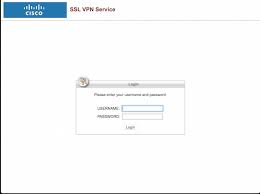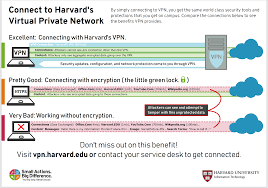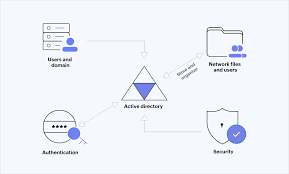The Importance of Software in Today’s Digital World
Software plays a crucial role in shaping our modern society, driving innovation, and revolutionising the way we live and work. From the applications on our smartphones to the complex systems running our businesses, software has become an indispensable part of our daily lives.
One of the key benefits of software is its ability to automate tasks and streamline processes. Whether it’s managing finances, communicating with others, or analysing data, software enables us to perform tasks more efficiently and accurately than ever before. This increased efficiency not only saves time but also enhances productivity across various industries.
Furthermore, software has facilitated global connectivity by enabling instant communication and collaboration regardless of geographical boundaries. Platforms like social media, messaging apps, and video conferencing software have transformed the way we interact with one another, making the world a smaller and more interconnected place.
In addition to improving efficiency and connectivity, software has also paved the way for innovation in fields such as healthcare, education, transportation, and entertainment. Advanced software solutions have revolutionised medical diagnostics, personalised learning experiences, autonomous vehicles, and immersive gaming experiences.
Moreover, software plays a critical role in data management and analysis. With the exponential growth of data in today’s digital age, organisations rely on sophisticated software tools to gather insights, make informed decisions, and drive business strategies. Data analytics software helps businesses uncover trends, patterns, and correlations that can lead to competitive advantages.
As technology continues to evolve at a rapid pace, the importance of software will only increase. From artificial intelligence and machine learning to blockchain technology and virtual reality applications, new innovations are constantly reshaping our world. Software developers play a vital role in driving these advancements by creating cutting-edge solutions that address complex challenges and improve quality of life.
In conclusion, software is not just a tool but a catalyst for progress in today’s digital world. Its impact spans across all aspects of society – from enhancing communication and collaboration to driving innovation and improving efficiency. As we embrace the power of software-driven solutions, we pave the way for a more connected, efficient, and innovative future.
Nine Key Advantages of Software: Boosting Productivity, Connectivity, and Innovation in Business
- Enhances productivity by automating tasks
- Facilitates global connectivity and communication
- Drives innovation across various industries
- Improves efficiency in business operations
- Enables data management and analysis for informed decision-making
- Enhances user experiences through intuitive interfaces
- Provides scalability to adapt to changing needs
- Increases competitiveness through technological advancements
- Empowers creativity and problem-solving
Seven Key Drawbacks of Software: From Vulnerabilities to Dependency
- 1. Vulnerabilities
- 2. Compatibility Issues
- 3. Complexity
- 4. Cost
- 5. Maintenance Requirements
- 6. Privacy Concerns
- 7. Dependency
Enhances productivity by automating tasks
Software significantly enhances productivity by automating repetitive tasks and streamlining processes. By leveraging automation, individuals and organisations can save time and effort on manual activities, allowing them to focus on more strategic and value-added work. Whether it’s scheduling appointments, generating reports, or processing data, automated software solutions not only increase efficiency but also reduce the risk of human error. This pro of software empowers users to accomplish more in less time, ultimately boosting overall productivity and driving better outcomes.
Facilitates global connectivity and communication
Software serves as a powerful tool in facilitating global connectivity and communication, breaking down barriers and enabling seamless interaction across borders. Through platforms such as social media, messaging apps, and video conferencing software, individuals and businesses can connect instantaneously, share ideas, collaborate on projects, and build relationships regardless of geographical distance. This pro of software not only fosters a more interconnected world but also opens up endless opportunities for cross-cultural exchange, knowledge sharing, and collaboration on a global scale.
Drives innovation across various industries
Software serves as a catalyst for innovation across diverse industries by enabling organisations to push the boundaries of what is possible. From developing cutting-edge technologies to streamlining processes and enhancing customer experiences, software empowers businesses to think creatively and adapt to changing market demands. By leveraging innovative software solutions, companies can stay ahead of the curve, drive efficiency, and unlock new opportunities for growth and success in an ever-evolving digital landscape.
Improves efficiency in business operations
Software plays a pivotal role in enhancing efficiency in business operations by automating tasks, streamlining processes, and centralising data management. With the right software solutions in place, organisations can eliminate manual errors, reduce time-consuming manual tasks, and improve overall productivity. By enabling seamless communication, real-time collaboration, and data analysis, software empowers businesses to operate more smoothly and effectively, ultimately leading to cost savings and competitive advantages in today’s fast-paced global marketplace.
Enables data management and analysis for informed decision-making
Software plays a pivotal role in enabling effective data management and analysis, empowering organisations to make informed decisions based on valuable insights. By leveraging sophisticated software tools for data processing and interpretation, businesses can extract meaningful patterns, trends, and correlations from vast amounts of information. This capability not only enhances decision-making processes but also allows companies to stay agile and competitive in today’s data-driven landscape. Effective data management and analysis facilitated by software are essential components for driving strategic initiatives and achieving sustainable growth.
Enhances user experiences through intuitive interfaces
Software enhances user experiences through intuitive interfaces by providing users with a seamless and user-friendly interaction with digital tools and applications. Intuitive interfaces simplify complex tasks, reduce the learning curve for new users, and improve overall usability. By incorporating intuitive design principles, software developers create interfaces that anticipate user needs, guide them through processes effortlessly, and ensure a positive and engaging user experience. This pro of software not only increases user satisfaction but also boosts productivity and efficiency in various domains, ultimately leading to better outcomes for both individuals and businesses.
Provides scalability to adapt to changing needs
Software offers a significant advantage by providing scalability to adapt to changing needs. This flexibility allows businesses to expand or downsize their operations seamlessly, adjusting their software systems to accommodate growth or fluctuations in demand. Whether it’s upgrading to support increased user traffic or scaling back during quieter periods, the ability to easily adjust software resources ensures that organisations can remain agile and responsive in a dynamic environment. This scalability feature not only enhances operational efficiency but also enables businesses to optimise their resources effectively, aligning their technology infrastructure with evolving requirements.
Increases competitiveness through technological advancements
One significant advantage of software is its ability to enhance competitiveness through technological advancements. By leveraging innovative software solutions, businesses can streamline operations, improve efficiency, and stay ahead of the curve in a rapidly evolving market. From implementing automation tools to adopting data analytics platforms, organisations can leverage technology to gain insights, make data-driven decisions, and differentiate themselves from competitors. Embracing cutting-edge software not only boosts productivity and agility but also positions companies as industry leaders capable of adapting to changing trends and customer demands.
Empowers creativity and problem-solving
Software empowers creativity and problem-solving by providing individuals with the tools and resources to bring their ideas to life and overcome challenges in innovative ways. From graphic design software that allows artists to create stunning visuals to programming languages that enable developers to build complex applications, software opens up a world of possibilities for creative expression and problem-solving. By offering a platform for experimentation, collaboration, and iteration, software encourages individuals to think outside the box, explore new solutions, and push the boundaries of what is possible. Ultimately, software serves as a catalyst for unleashing creativity and fostering critical thinking skills in individuals across various disciplines.
1. Vulnerabilities
Software vulnerabilities pose a significant threat in today’s digital landscape, as they can be exploited by malicious actors to compromise the security of systems and access confidential information. Hackers often target these weaknesses in software to launch cyber attacks, such as data breaches or system intrusions, putting organisations and individuals at risk of financial loss and reputational damage. It is essential for software developers and users to remain vigilant, promptly address vulnerabilities through patches and updates, and implement robust security measures to mitigate the potential risks associated with software vulnerabilities.
2. Compatibility Issues
Compatibility issues pose a significant con of software usage as different applications may not seamlessly work together, resulting in integration challenges and potential performance issues. When software programs are not compatible, it can hinder the smooth flow of data and operations within an organisation, leading to inefficiencies and delays in tasks. These compatibility issues can also result in additional costs and resources being allocated to resolve integration challenges, impacting overall productivity and creating frustrations for users who rely on interconnected systems to perform their daily tasks effectively.
3. Complexity
Some software poses a significant challenge due to its complexity, demanding extensive training and technical expertise for effective operation. Users may find themselves overwhelmed by intricate interfaces and convoluted functionalities, leading to frustration and inefficiency. The steep learning curve associated with such software can deter users from fully utilising its capabilities, resulting in underutilisation of valuable features. This complexity not only hinders productivity but also incurs additional costs for specialised training and support, creating barriers to widespread adoption and accessibility.
4. Cost
One significant drawback of software is its cost, particularly when it comes to high-quality solutions. Many advanced software products and services are accompanied by a substantial price tag, which can be prohibitive for small businesses or individuals with limited budgets. The expense of acquiring and maintaining such software can pose a financial challenge, potentially restricting access to essential tools and technologies that could otherwise enhance productivity and competitiveness in the marketplace. As a result, the high cost of quality software may create barriers to entry for smaller entities looking to leverage technological advancements for their growth and success.
5. Maintenance Requirements
One significant drawback of software is the maintenance requirements it entails. Regular updates and maintenance are essential to keep software running smoothly and securely. However, this process can be time-consuming and costly for both individuals and businesses. Constantly monitoring for updates, applying patches, and troubleshooting issues can divert valuable resources away from core tasks. Moreover, the cost of licensing fees, technical support, and hiring IT professionals to manage software maintenance adds up over time, impacting the overall budget allocation. The ongoing maintenance demands of software can pose a challenge for users seeking to balance performance optimisation with operational efficiency.
6. Privacy Concerns
Privacy concerns related to software pose a significant con that cannot be overlooked. In some cases, software may surreptitiously gather user data without explicit consent, leading to apprehensions about the handling and dissemination of personal information. This lack of transparency raises valid questions about data privacy and the extent to which individuals have control over their own information when using certain software applications. Such practices undermine trust between users and software developers, highlighting the importance of robust data protection regulations and ethical guidelines in the digital age.
7. Dependency
Dependency on software for critical tasks poses a significant con due to the potential repercussions of system failures or bugs on operations and productivity. When organisations heavily rely on software to perform essential functions, any unexpected glitches or malfunctions can disrupt workflows, leading to downtime, delays, and potential financial losses. The interconnected nature of modern systems means that a failure in one software component can have cascading effects across an entire network, highlighting the importance of robust testing, maintenance, and contingency plans to mitigate the risks associated with software dependency.










